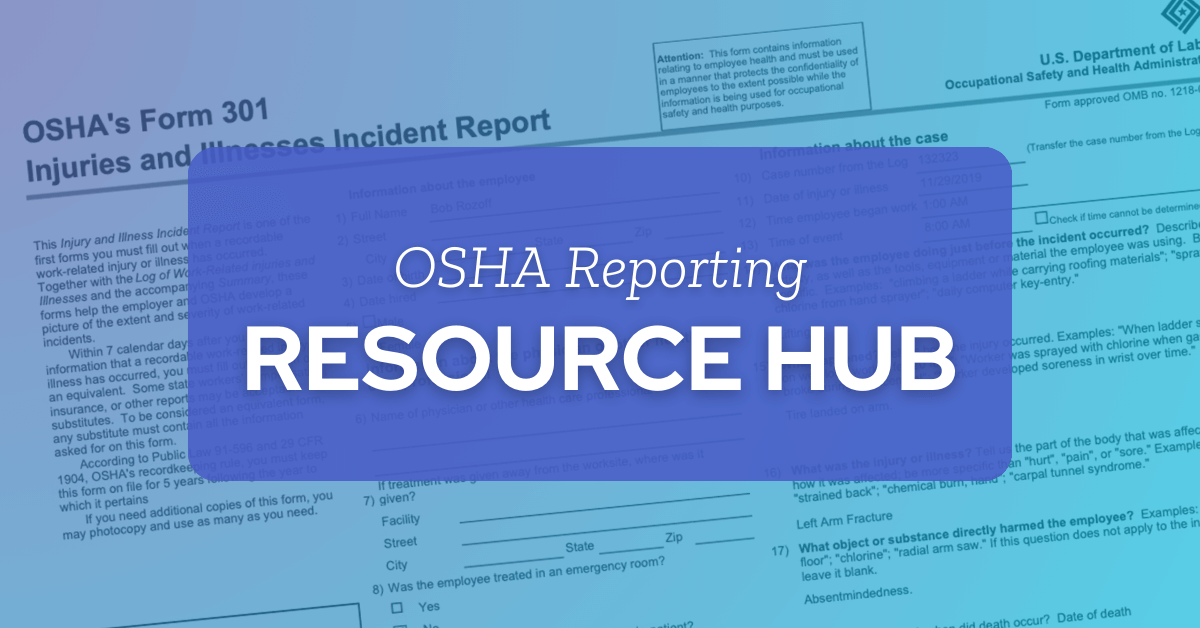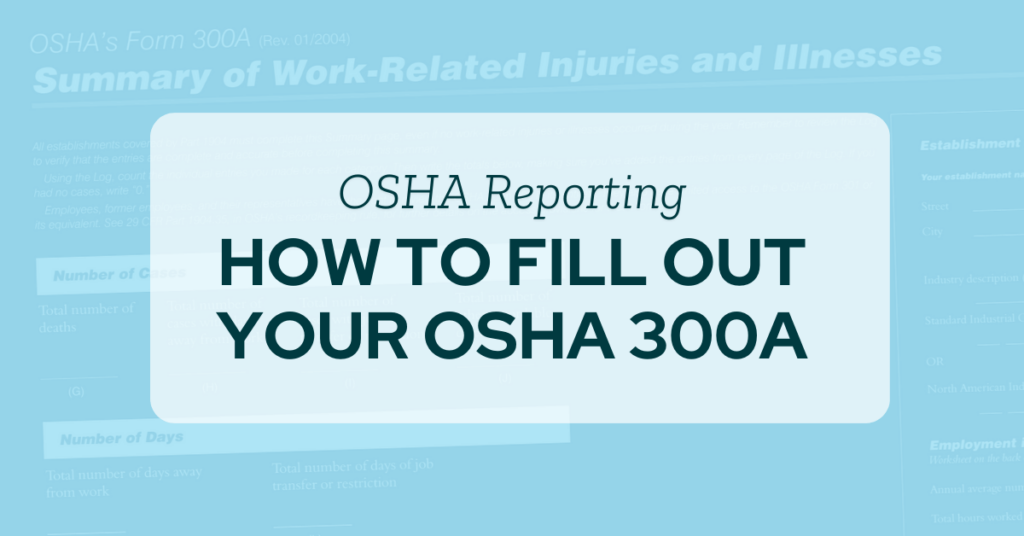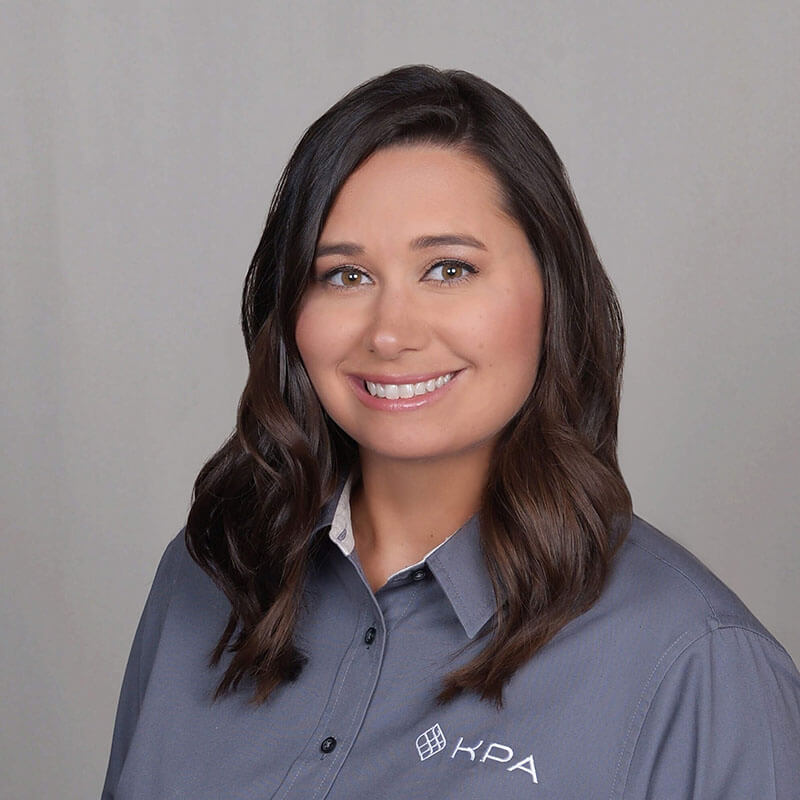The beginning of the year brings a new OSHA reporting season. And the first deadline is February 1st, which is coming up quickly. Here are some tips on filling out your OSHA 300A form.
Three keys to filling out your OSHA 300A form
- Needs to be accurately filled out
- Must be signed by a Certifying Official
- Must be posted where employees can see it
Where does the data come from?
You have had to keep up with an OSHA 300 log throughout the year. This applies to most industries but not all of them. The goal of the OSHA 300 log is to account for the types of injuries that are considered severe.
- Was it an injury or illness that required more than first aid?
- Did we have a death?
- Loss of consciousness?
A yes to any of these questions would end up on your log. Consider any type of injury that had days away from work or any restricted work activity. Those are the types of incidents that we’re noting on the OSHA 300 log of work.
Here’s the full list, if you’re a stickler for details:
- work-related fatality
- work-related injury or illness resulting in loss of consciousness, days away from work, restricted work, or transfer to another job
- work-related injury requiring more than medical treatment beyond first aid
- work-related diagnosis of cancer, chronic irreversible diseases, fractured or cracked teeth, bones, or punctured eardrums
- also special recordkeeping criteria for work-related cases involving needlesticks and sharps injuries, medical removal, hearing loss, and tuberculosis.
Check it out:
Learn everything you need to know about OSHA Reporting

How do I fill out my OSHA 300A form?
With any type of paperwork we’re filling out, we’ve got to make sure it’s accurate. So, make sure that you have accurately reviewed your OSHA 300 log from the year before.
Start with your facility data.

Don’t know your NAICS code? You can look it up here.
How do you calculate the total hours worked by employees?
You’ll need to know the number of full-time employees that worked at that establishment that year.
Multiply that by 2,000 hours (which is the commonly agreed-upon standard number of work hours for full-time workers’ work).
This will give you a reasonable guesstimate.
If you’d like to be more specific (which OSHA would prefer), here’s how to calculate that number.
- Include hours worked by salaried, hourly, part-time and seasonal workers, as well as hours worked by other workers subject to day-to-day supervision by your establishment (e.g., temporary help services workers). Basically, anyone that worked at your establishment.
- Do not include vacation, sick leave, holidays, or any other non-work time, even if employees were paid for it. It can get a little tricky when diving into the details, which is why some companies rely on the standard number of hours data point.
- If your establishment keeps records of only the hours paid or if you have employees who are not paid by the hour, estimate the hours that the employees actually worked.

Who can be a certifying official for my OSHA 300A form?
We need to make sure that we have a certifying official’s signature to include on the form.
The certifying official attests that they have personally examined that OSHA 300A summary form and know that it’s reasonably accurate. They’re also attesting that they’ve personally looked at the OSHA 300 log to cross-check how accurate that is as well.
As for who the company executive can be, it’s typically the company’s owner. Not all owners are on-site. In that case, it can be an officer of the corporation. At the very least, the highest-ranking company official working at that establishment may also sign. Note, that electronic signatures are not prohibited by OSHA, if that’s what you prefer.
Where do I post this thing? OSHA 300A Posting Requirements
OSHA requires companies to physically print their 300A form and post it in a public area for employees to view.
But, what’s a public area? This would be any normal area where you post things like regulatory posters, updates, stuff like that. Break rooms are going to count. A corkboard in a hallway? That’ll count as well. Ensure it’s in a place where employees can easily view it, and it’s not hidden behind other postings. If people are visiting an intranet, you can post it there too – but remember you need to post it physically as well.
You’ll need to keep your OSHA 300A form posted between February 1st and April 30th.
Got your OSHA 300A form posted? You get a gold star!
But you’re not out of the reporting woods yet…your OSHA recordkeeping submissions are due March 2nd. Stay tuned for some best practices on that front as well.
Don’t let OSHA recordkeeping requirements take more time and energy than necessary.
Lean on KPA software and consulting expertise to help you efficiently follow best practices, as well as easily manage cases, establishments, and work hours. Generate the required OSHA 300 forms and view statistical data like TRIR and DART.
Check it out:
Learn everything you need to know about OSHA Reporting


